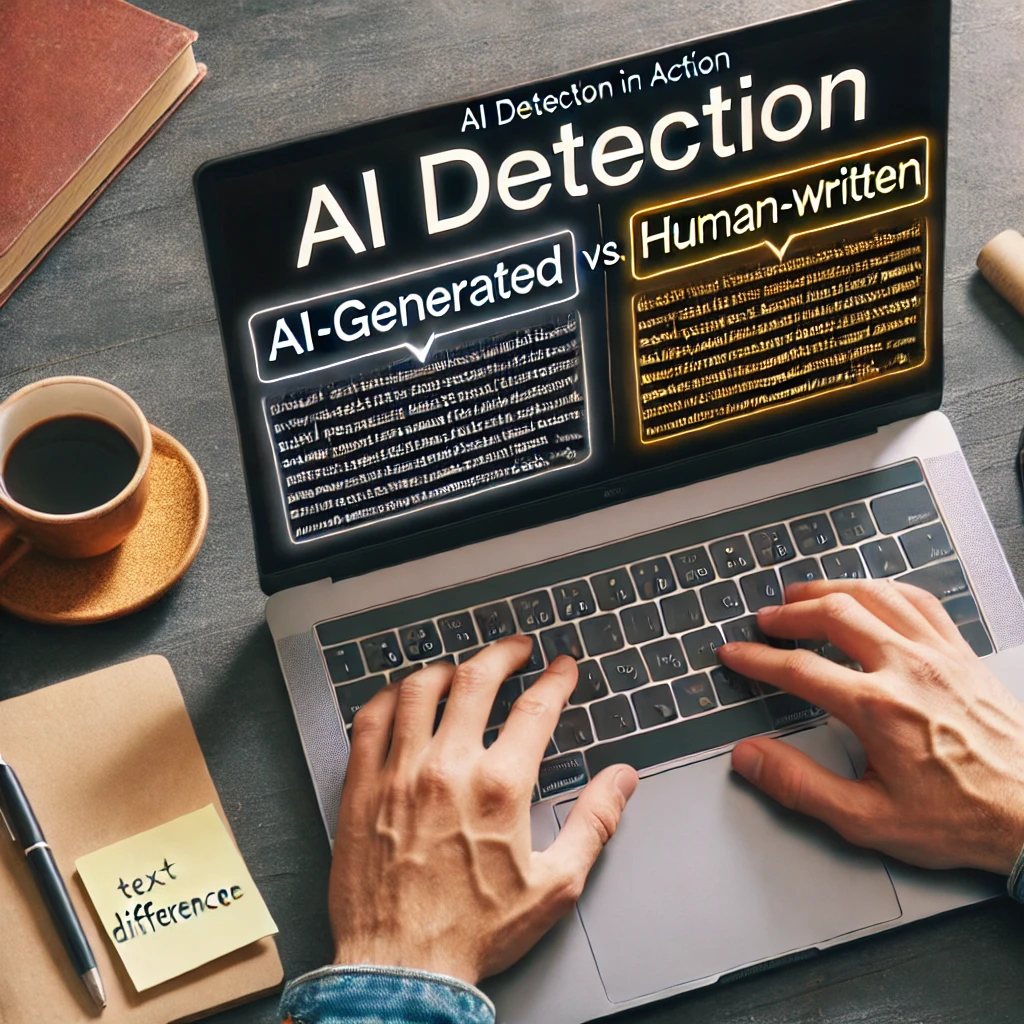AI detectors are advanced tools designed to differentiate between human-written and AI-generated content. As AI writing tools like ChatGPT, Google Bard, and Jasper AI continue to evolve, the need for reliable AI detection is growing. Understanding how AI detectors work is essential for students, businesses, journalists, and digital marketers who need to ensure content authenticity.
This article explores the key techniques used by AI detection tools, their real-world applications, and their challenges.
How AI Detectors Work: Techniques for Identifying AI-Generated Content :
AI detectors rely on multiple techniques to analyze text and identify AI-generated patterns. These methods ensure that AI content can be distinguished from human writing.
1. Perplexity Analysis – Measuring Predictability in Writing
- Perplexity measures how predictable or unpredictable a sentence is based on language patterns.
- AI-generated text often follows a structured and repetitive pattern, making it more predictable.
- Higher perplexity = More human-like writing with unexpected word choices and varied phrasing.
- Lower perplexity = More AI-like writing with consistent patterns and structured sentences.
Example:
- AI-generated: “Artificial intelligence is a rapidly evolving field that has transformed various industries.”
- Human-written: “AI is changing everything—from how we work to how we think. Some love it, others fear it.”
Because human writers inject personal experience, tone shifts, and spontaneity, AI detection tools use perplexity to spot rigid patterns in AI-generated text.
2. Burstiness Measurement – Checking Sentence Variation
- Humans naturally mix long, complex sentences with shorter, informal ones.
- AI-generated content often maintains a uniform sentence length, making it less dynamic.
Example:
- AI-generated: “Technology is advancing quickly. AI is playing a crucial role. Many industries benefit from AI.”
- Human-written: “Technology is moving at an insane pace! One moment, AI is just a concept, and the next, it’s shaping entire industries.”
If an AI detector finds consistent sentence lengths with minimal variation, it may flag the content as AI-generated.
3. Stylometric Analysis – Examining Writing Style Patterns
AI detectors analyze the writing style, word choice, and sentence structure to detect AI-generated text.
Common patterns in AI-generated content:
- Overly formal tone (e.g., “do not” instead of “don’t”).
- Repetitive phrases (e.g., “this article will discuss” appears too frequently).
- Lack of storytelling, humor, or personal insights.
Example:
- AI-generated: “This article will examine the impact of artificial intelligence on modern industries.”
- Human-written: “Let’s dive into how AI is shaking up industries—for better or worse.”
AI-generated text often feels robotic and overly structured, while human writing is more expressive and fluid.
4. Watermarking – AI’s Hidden Fingerprints in Text
- Some AI models use watermarking techniques, embedding hidden statistical patterns into text.
- These watermarks are invisible to humans but detectable by AI tools.
Example:
- OpenAI is developing digital watermarking for ChatGPT to make AI detection easier.
In the future, AI watermarking could help eliminate false positives in AI detection tools.
5. Machine Learning Models – AI Detecting AI
- AI detectors are trained using large datasets of human-written and AI-generated text.
- These tools analyze patterns, sentence structures, and predictability to differentiate between AI and human writing.
- As AI evolves, AI detectors must be updated constantly to remain effective.
AI detection models learn from past AI outputs, making them smarter at identifying evolving AI-generated writing patterns.
How AI Detectors Work in Real-World Applications?
AI detection tools play a critical role in multiple industries, ensuring content authenticity and preventing misinformation.
1. Academic Integrity – Preventing AI Plagiarism
- Schools and universities use AI detectors to prevent students from submitting AI-generated essays.
- These tools ensure that students are producing original work and not relying on AI for academic tasks.
Example:
- A U.S. university wrongly penalized students when its AI detector misidentified human-written essays as AI-generated.
Educators must use AI detection tools responsibly, combining human judgment with AI scanning results.
2. SEO & Digital Marketing – Google’s Fight Against AI Content
- Google prioritizes human-written, high-quality content over AI-generated material.
- AI detectors help businesses avoid penalties for AI-generated spam.
- Many SEO experts rely on AI detection tools to ensure compliance with Google’s guidelines.
Example:
- In 2023, Google rolled out an update targeting AI-generated spam, lowering rankings for AI-heavy websites.
SEO professionals must balance AI-assisted content creation with human editing to maintain search rankings.
3. Journalism & Publishing – Preventing Fake News
- News agencies use AI detectors to verify the authenticity of articles before publishing.
- These tools prevent the spread of AI-generated misinformation and deepfake content.
Example:
- A major news outlet faced backlash for publishing AI-generated reports as real news.
Reliable journalism requires AI detection tools to maintain credibility.
4. Business & Legal Industry – Verifying AI-Generated Contracts
- Law firms use AI detectors to ensure contracts are properly written.
- AI-generated contracts may lack important legal clauses, leading to potential legal issues.
Example:
- A startup unknowingly signed an AI-generated contract, causing major legal complications.
AI detection in business and law helps prevent costly mistakes.
Challenges & Limitations of AI Detectors
Current Limitations of AI Detectors
- False positives – AI detectors sometimes flag human writing as AI-generated.
- False negatives – Some AI-generated text escapes detection.
- Context struggles – AI detectors have difficulty analyzing creative or niche content.
-
The Future of AI Detectors
- More Advanced AI Models – Future AI detection tools will improve accuracy by analyzing deeper language patterns.
- Hybrid AI + Human Review – A combination of AI-powered detection and manual verification will reduce false positives.
- AI Watermarking Adoption – More AI models will embed hidden digital watermarks, making AI-generated content easier to detect.
Example: Tools like Originality.AI combine AI detection with plagiarism checks to improve content authenticity.
Ethical Concerns with AI Detectors
- Privacy Risks – AI detectors may store or expose sensitive information.
- Censorship Issues – AI detection could unfairly flag legitimate content.
- Bias in Detection – Some AI detectors may favor certain writing styles or languages, leading to misclassification.
Conclusion: How AI Detectors Work & Why They Matter
Understanding how AI detectors work is critical in today’s digital landscape. These tools help ensure content authenticity in education, SEO, journalism, and legal fields.
As AI models improve, AI detection tools must evolve alongside them. Whether you’re a student, content creator, or business professional, staying informed about AI detection is essential.
- Try AI detection tools like Originality.AI or GPTZero to test accuracy.
- Stay updated on AI detection advancements.
- Join the conversation – how do you feel about AI-generated content?


